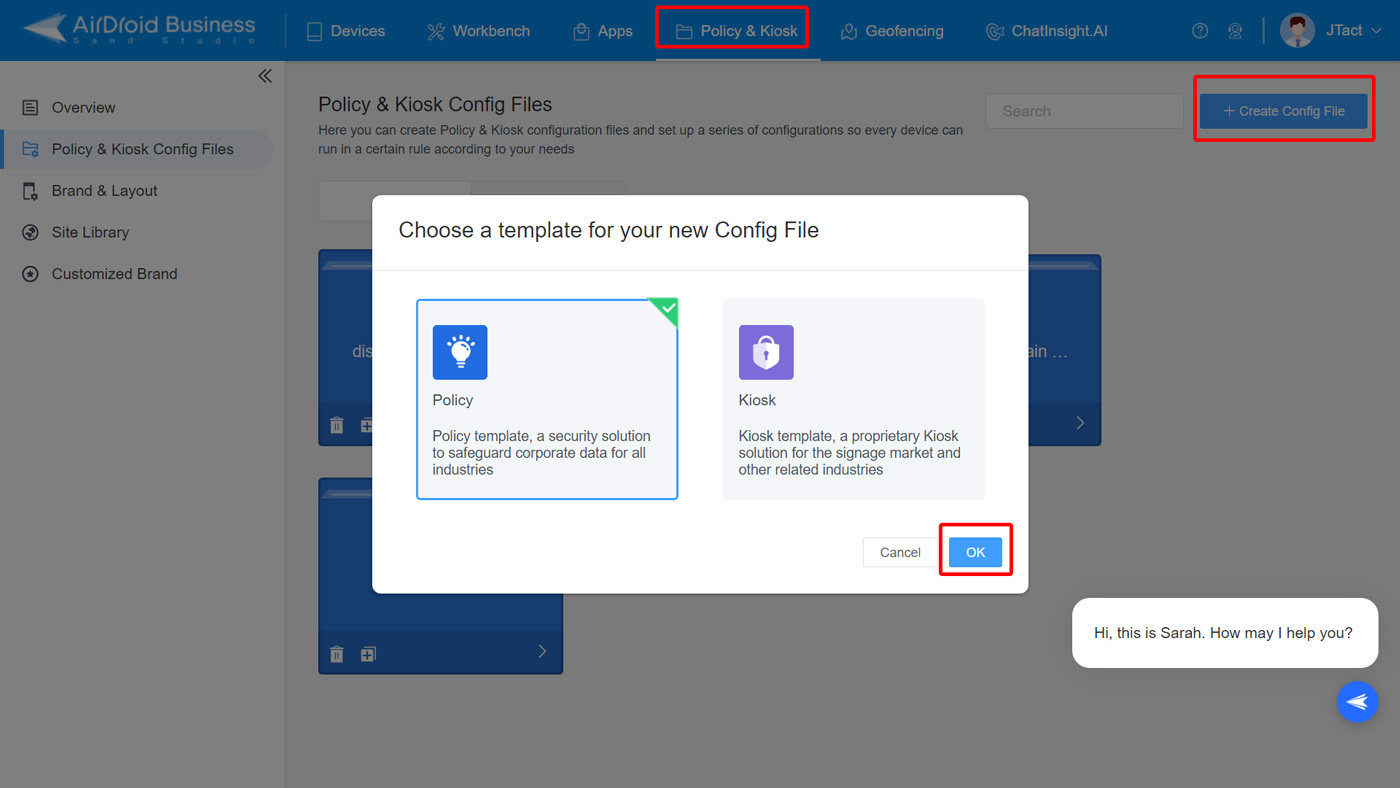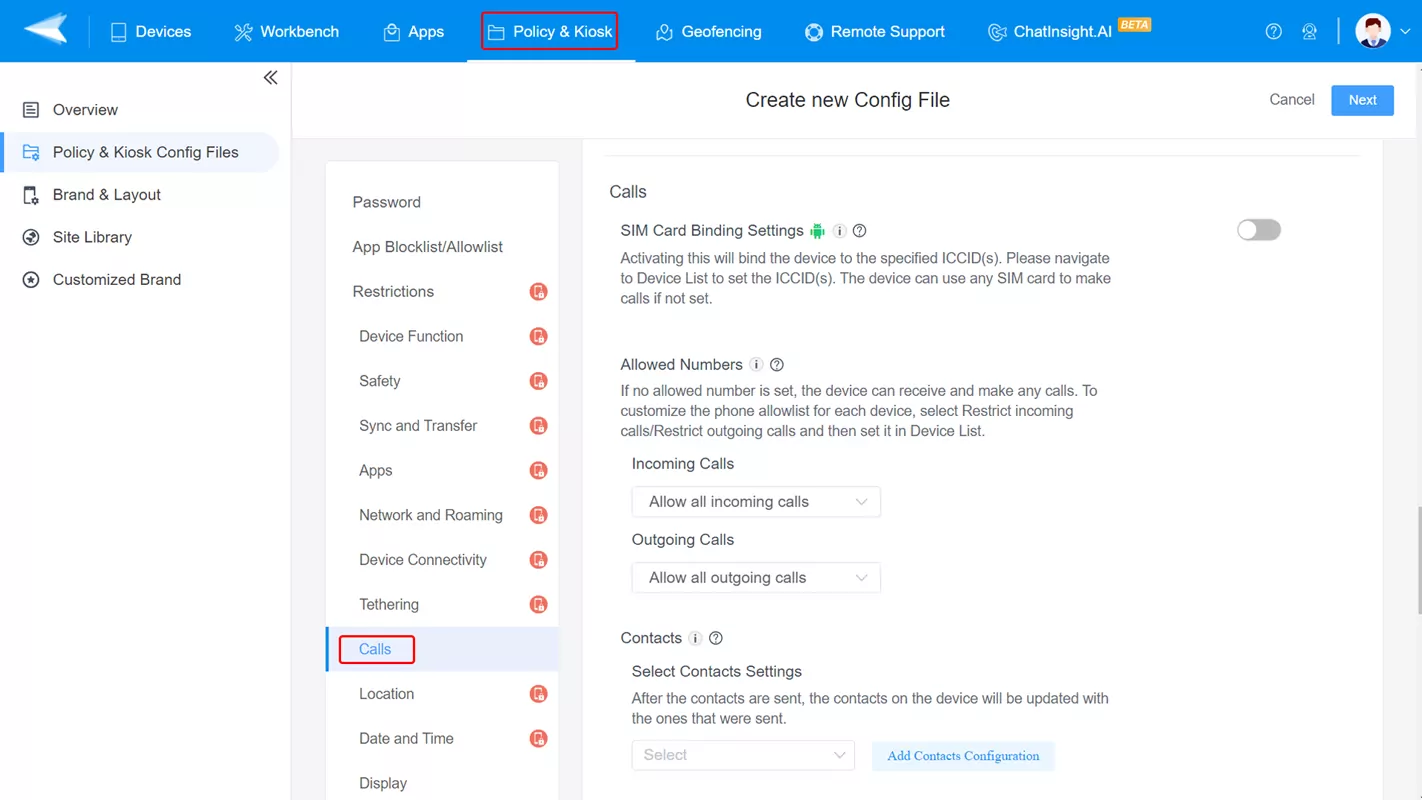Android Contact Management & Tool for Managed Devices
In an era where businesses highly rely on online operations, it's crucial to ensure compliance with the organization's standards and policies. Among those processes, contact management is one of the significant ones.
Contact management is, in general, a process of storing contacts in an organized manner that makes access and retrieval easier. This stands important for various settings, for example, a company wants their employees to abide by the policies when following a remote working model. Another use case is the maintenance of customer(s) and business partner(s) contacts to improve business relations.
This article covers the details of Android contact management, using MDM for contact management, and its use cases.
Part 1 : Android Contact Management and Mobile Device Management
Android Contact Management refers to the process of managing and controlling the contact list on Android mobile devices so that to allow or block calls.
Using tools like Android business contact manager to help with the management is a good option.
But, in some cases, enterprises may expect more than just managing contacts on Android. Device compliance and security are important considerations as well when using Android devices for work.
MDM (mobile device management) software meets the requirement. Though its original intention is to secure and control company devices, the tool has extra capabilities for enterprise contact management. It can help you in two significant ways:
- Manage contacts for incoming/outgoing calls: You can specify the list of allowed and restricted numbers to help manage the contacts.
- SIM card binding: SIM binding is the process of binding the SIM card with the device in use. After setting, the devices can only make phone calls when the SIM card ICCID matches the assigned ICCID.
Part 2 : How to Manage Android Phone Contacts from a PC?
When an organization has a large number of corporate devices requiring the management of contacts, the MDM solution is the right choice for Android contact management. This is because the MDM platform allows you to control and manage the usage and content of devices from a single centralized console.
Following the steps and see how to utilize MDM to manage Android phone contacts from a computer:
- Step 1.Enroll Android devices to enable remote management
- Enrolling devices in your MDM solution is the first step towards device management. This allows access and control of all devices from a centralized dashboard.
- You need to log into the web-based portal or install the PC software of MDM. Then, navigate to Devices > Device Enrollment.
- Step 2.Manage contacts for Android using Policy-Call
- Once you have all the devices enrolled, you're all set to create and apply a call policy across the devices.
- Go to Policy & Kiosk tab > Click Policy & Kiosk Config Files > + Create Config File and proceed with the settings in Restrictions > Calls.

- Step 3.Define a list of allowed numbers
- Here you can choose Incoming Calls, Outgoing Calls, or both.
- Enter the numbers by clicking Add Allowed Numbers.
- If you have a large number of contacts, you can upload them with a CSV file.

- Step 4.Update contacts on Android with Add Contacts Configuration
- This function can let you update the contacts to the devices in bulk once the policy is applied.
- Step 5.Apply the call policy file to managed Android devices
- The last step is to apply that policy file across all the managed devices.
- This sets the devices to abide by the defined contact configurations, giving IT administrators better control.

With Android MDM, you can set up a call policy to define the configurations for the device contact management. These policies can range across different use cases and scenarios, some of which are as follows:
- Define a list of Allowed Numbers - Enter all the numbers you want to allow calls to/from under all scenarios. This can be utilized to set the important company numbers in the Allowed Numbers list to never miss a call from them. Without having any Allowed Numbers list, the device has no restriction when it comes to making and receiving calls.
- Restrict Incoming and Outgoing Calls to/from Certain Numbers - Enter the numbers you want to restrict the calls to/from. This helps keep your devices safe from inappropriate and scam calls.
- Apply SIM Binding - Binding the SIM with the phone will specify the usage of that SIM to make calls via that device. After SIM binding, the device won't allow to make calls using any other SIM.
Part 3 : 4 Use Cases of Manage Android Phone Contacts with MDM
Following are some of the real-life use cases with a requirement for Android contact management:
Remote Teams
When the teams are working remotely, it's significant to ensure a certain control over their devices. This helps guarantee compliance with the industrial standards and improve the business processes.
Sales and Customer Support Teams
Sales and customer support teams must have an updated contacts list to ensure smooth communication. With the right call policy, the IT administrator can send the updated contact list across all the devices, which ultimately helps nurture customer relationships.
Healthcare
The healthcare industry utilizes contact management setups to have updated records of the patients. This helps in having a smooth appointment and follow-up processes with them.
Large Corporation
With the increased size of the company, it's crucial to keep everyone on the same page. The larger the number of corporate devices, the harder it is to ensure compliance and abidance by policies. However, with the MDM solution, it's easier than ever to ensure that all the connected corporate devices have the updated contacts list.
Part 4 : Benefits of Using MDM for Android Contact Management
This section highlights some of the benefits of opting for an MDM solution for Android Contact Management. These include:
1Manage in Bulk
The MDM solution gives you access and control of all the devices from a centralized dashboard, saving the organization from managing each device individually. The IT admins can easily manage and update the contacts list across numerous devices collectively.
2Security
By having effective call policies, the organization can ensure the security of the connected devices. For example, the devices can be restricted from making calls to certain numbers and using only the bound SIM card to make calls from that phone.
3Compliance
By controlling the contacts list and calls, the organization can ensure compliance with industrial standards. This helps reduce the chances of falling into unwanted situations, which further lead to compliance issues.
4Keep Up to Date
As mentioned earlier, the MDM equips you with the ability to bulk update the contact list across all the connected devices with ease. This helps ensure that everyone has an updated list, avoiding confusion.
Bringing it all together, contact management is an important element in having smooth and efficient business processes. As seen in the article, the MDM solution is a great choice to resolve the inconsistencies and problems in managing contacts across multiple devices.







Leave a Reply.